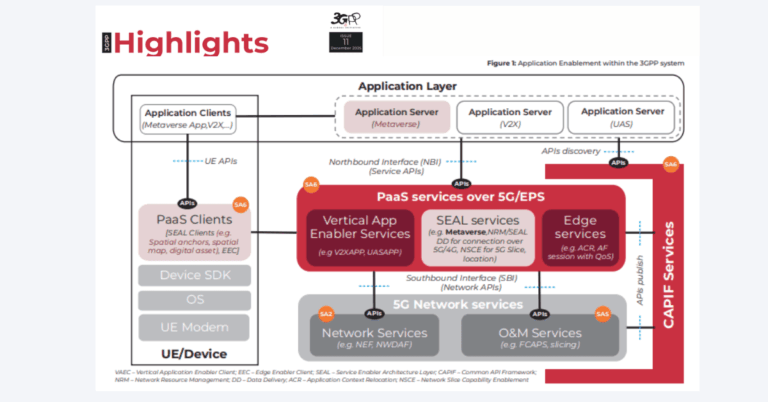Iridium and T-Mobile add LEO PNT for resilient 5G timing and continuity
Iridium and T-Mobile are scaling satellite-delivered positioning, navigation, and timing services under a U.S. Department of Transportation initiative to bolster the resilience of 5G networks against GPS disruptions.
DoT CPNT program fast-tracks GPS alternatives for 5G timing
The Department of Transportation’s Complementary PNT Action Plan Rapid Phase Award II targets field evaluation of commercially ready solutions that augment or back up GNSS timing for critical infrastructure. As part of this program, Iridium will support a broad rollout of its PNT capability while T-Mobile expands installations to 90 additional live 5G sites across diverse geographies, creating a meaningful dataset on performance in real-world conditions.
Live 5G site activations to harden timing and reduce outages
The collaboration equips T-Mobile sites with Iridium PNT receivers to deliver precise, authenticated timing that complements existing GNSS sources. The goal is to reduce timing-related outages and performance degradation caused by GNSS jamming, spoofing, or signal loss, which can impact 5G throughput, latency, and mobility when tight time/phase synchronization is required.
How Iridium LEO L-band PNT delivers sub-100-ns timing
Iridium transmits timing over its low-earth-orbit constellation in the L-band, offering weather-resilient coverage and stronger signals than typical GNSS. The service is engineered for sub-100-nanosecond accuracy, uses cryptographic protections for integrity, and can operate indoors without an external antenna, addressing urban canyons, indoor small cells, and hard-to-reach sites where GNSS is unreliable.
Why complementary PNT is critical for 5G densification and SLAs
5G networks depend on precise timing to coordinate radios, schedule traffic, and assure service-level commitments across dense, heterogeneous infrastructure.
Growing 5G timing demands and rising GNSS risk exposure
Mid-band TDD, Massive MIMO, carrier aggregation, and ultra-dense small cells all push tighter phase and time alignment across sites. When GNSS is impaired, timing grandmasters and PTP distribution struggle to maintain phase, which can throttle capacity, raise interference, or drop mobility sessions. Incidents of GNSS jamming and spoofing continue to rise near airports, seaports, and conflict zones, while indoor deployments and edge locations often lack clear sky view—creating a structural need for complementary PNT.
Moving from GNSS-only to multi-layer PNT architectures
Best practice is shifting from “GNSS as a single source” to layered architectures that combine GNSS, satellite-delivered complementary PNT, network-based delivery (PTP/SyncE), and high-stability holdover. Adding LEO L-band timing improves signal availability, penetration, and diversity, strengthening mean-time-between-failure and reducing the blast radius of timing faults in RAN, xHaul, and edge clouds.
Technical specifics: timing accuracy, security, and standards fit
The deployment is designed to mesh with existing timing frameworks while raising accuracy and integrity under degraded conditions.
Sub-100-ns timing and LEO coverage advantages
LEO orbits deliver lower latency and higher received power relative to MEO GNSS, improving acquisition and indoor coverage. With sub-100-ns timing, operators can maintain the sub-microsecond budgets that 5G TDD and advanced radio features demand, providing headroom for PTP chain asymmetries and real-world impairments.
Integration with PTP, SyncE, 3GPP, and O-RAN timing profiles
In typical architectures, complementary PNT feeds timing grandmasters that distribute time over IEEE 1588v2 PTP and frequency over SyncE to radios and edge platforms. This supports 3GPP and O-RAN timing profiles and aligns with ITU-T G.827x objectives for end-to-end time error. Cryptographic protections and receiver authentication add a security layer that complements emerging security profiles for time distribution and mitigates spoofing risks at the source.
Deployment and testing across diverse real-world 5G environments
The program advances from lab validation to live-site integration and controlled adverse-condition testing.
90-site 5G rollout across varied geographies
By instrumenting a broad, geographically diverse set of live T-Mobile 5G sites, Iridium and the DoT can assess performance under different propagation, interference, and backhaul scenarios. This includes urban indoor placements, rooftop macros with multipath risk, and rural sites where GNSS visibility and backhaul diversity vary widely.
Controlled testing under nominal and spoofing/jamming scenarios
T-Mobile will run structured tests in a controlled indoor range to evaluate timing stability and failover behaviors under nominal conditions and during simulated disruptions. This allows stakeholders to capture metrics such as time error, holdover performance, reacquisition time, and the impact on radio KPIs under a standardized methodology.
Strategic impact: 5G resilience, compliance, and differentiation
Complementary PNT is moving from pilot to portfolio, with clear implications for operator strategy, enterprise risk, and regulatory posture.
Benefits for MNOs, critical infrastructure, and enterprises
For MNOs, complementary PNT reduces timing-related outages, protects mid-band investments, and supports deterministic SLAs for slices and private 5G. For critical infrastructure and regulated industries, it strengthens compliance postures tied to PNT resilience. The move also provides a hedge against GNSS policy or spectrum changes and a pathway to resilient indoor 5G where GNSS is impractical.
Immediate steps: audit, design multi-layer PNT, prioritize sites
Audit timing dependencies across RAN, transport, and edge; quantify risks from GNSS loss, asymmetry, and spoofing; and create a multi-layer PNT design that blends GNSS, complementary satellite PNT, PTP/SyncE distribution, and high-stability holdover. Validate alignment with 3GPP and O-RAN timing profiles and instrument sites with continuous time-error monitoring and alarms. Prioritize high-value or high-risk clusters—dense TDD regions, enterprise campuses, and critical service areas—for early deployment.
What’s next: broader CPNT adoption and timing security
Expect broader CPNT adoption across U.S. networks, expanded test data on indoor deployments, and tighter integration with timing security standards. As 5G Standalone scales and edge workloads grow, complementary PNT will become a baseline requirement for service assurance, not a niche enhancement.








































